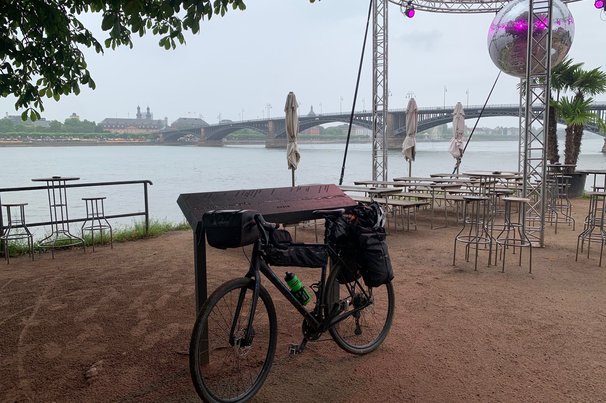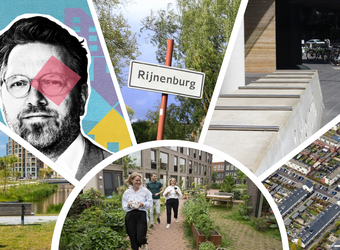Persoonlijk “Set a couple of Dutchmen up on land with a high risk of flooding and what do they do? Exactly – they build dikes. But what do Americans do? Those who can afford it build houses on stilts. The rest have to fend for themselves.”
Dutch water management expert advises the American Secretary how to defend New York and New Jersey against rising waters
In a nutshell, this is the dilemma that Henk Ovink (45) comes up against in the US. The Dutch civil servant and water management expert has been on loan to the American government since April, after Hurricane Sandy wreaked havoc on the eastern coast in late 2012 and put large parts of New York and New Jersey under water. At a conference in New York today and tomorrow Ovink and the Dutch Minister of Infrastructure and Environment, Melanie Schultz, will be talking about combatting rising waters.
Ovink advises the American Secretary for Housing and Urban Development, Shaun Donovan, not just on emergency relief after flooding disasters and smart rebuilding tactics, but particularly on how New York and New Jersey can defend themselves against massive flooding and the rising sea level in the future.
The biggest challenge is getting people from the entire region to work together, and making sure that you get the right people to the table,
Says Ovink over the telephone from New York. The governors of New York and New Jersey and the mayor of New York City didn’t do that. Ovink has managed to do it. This has led to large-scale rebuilding projects where information is being shared and there’s mutual reinforcement. “Are you coming to build dikes on New York’s coastline?” asked one American journalist soon after Ovink’s installment. “But a dike or flood barrier isn’t always the solution. It could even be a bad decision: it costs millions and doesn’t always help. If you had only built a flood barrier and nothing else before Sandy hit, then all of Manhattan would have been flooded. The network of waterways here is much bigger and more complicated. The hurricane would have pushed waters up against the barrier, causing even greater destruction.”
The water management expert merely wants to say: one operation alone isn’t going to solve the problem, “that’s nonsensical.” Americans need to undertake a series of measures to withstand the next storm or flood. “Things like a good drainage system, catchment areas in the city where water van be contained, making sure that the most important cable and pipe intersections are not at ground level but much higher,” says Ovink. “So you have to start thinking in terms of systems. People often find that very difficult.” Together with the Hurricane Sandy Rebuilding Task Force he wrote a thick report that was published last month. At the end of it Ovink set out a design competition inviting teams with innovative ideas to submit proposals to protect New York and New Jersey against storms and rising sea waters. This isn’t child’s play: nearly 60 billion dollars of government funds are available for the rebuild. Of the 148 teams that submitted, there are 10 still in the running.
Amongst them, noticeably, are a lot of Dutch companies. That isn’t on account of Ovink, he laughs. “No, I don’t have favorites. I’m a professional and keep my eye on the quality. The Dutch are simply very good at designing water projects. We’ve been doing it for a couple of hundred years.” So architectural firms like OMA (Rem Koolhaas), Delft Technical University and Royal Haskoning-DHV are working on designs to protect Americans against rising waters. The designs will be completed early next year, but the basic contours are already visible. The sketches show coastal reinforcements and stronger housing.
President Obama is already “very excited”, the Secretary whom Ovink advises disclosed. Once the designs are in a more advanced stage, Obama himself will be invited to assess them.
“It’s a great assignment,” says the expert. “Suddenly you find yourself as a Dutchman walking into the White House for a meeting. Normally, you’re standing outside taking pictures. Now I pressed the doorbell and I was invited in.”
Almost 3000 Dutch companies
There are almost three thousand Dutch companies active in water technology, working in 73 countries. Dutch expertise is often called upon to protect areas against flooding, such as in Indonesia, Bangladesh, Vietnam, Colombia, Mozambique and the US.
“Let’s bring in the Dutch,” wrote American newspapers after Hurricane Katrina put large swaths of New Orleans under water in 2005. The Dutch water expertise industry has an export value of 18 billion euros. Dutch Minister Schultz is applying economic diplomacy and undertaking trade missions to increase this industry even more.
Translation: Dianna Beaufort
See also:
Cover: ‘2013.09.19_Watersnood? Fly in the dutch!’




